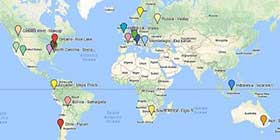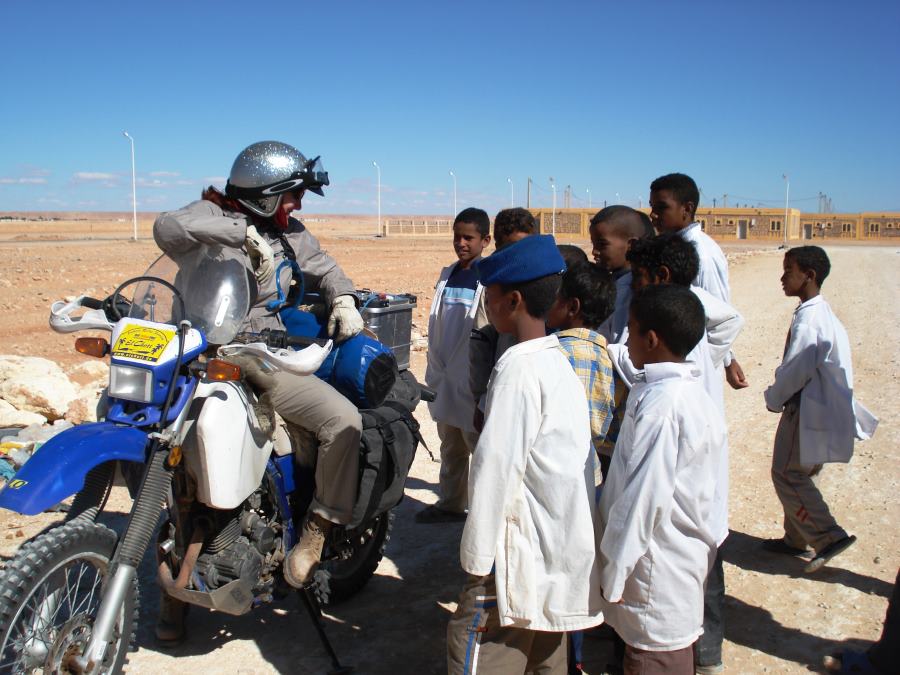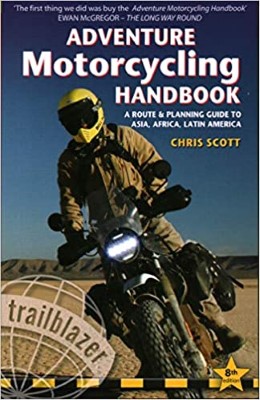
Start: October 15, Sorata
Finish: October 23, Uyuni
Death Roads Survived: 1
Fluffy Things Made From Alpaca Bought By Jessica: 3
Bolivian Capitol Cities Camped In: 2
Likelihood of Kobus Ever Wanting to Drive in La Paz Again: Nada
This week we pass through both of Bolivia's capital cities. La Paz, the administrative center and highest capital city in the world, and Sucre, Bolivia's judicial and cultural capital and certainly the most beautiful and welcoming city in Bolivia. In between, we stop over in the towns of Oruro and Potosi, mining towns that are attempting to retain some of their previous golories, with limited success.
The highlights of our week were finding a fantastic campsite in the town of Coroico and driving the death road connecting Coroico to La Paz, proclaimed by many to be the most dangerous road in the world.

From the oasis paradise in Sorata we head towards La Paz, the seat of Bolivia's government. En route we pass some spectacular mountains and cross through more endless miles of Altiplano landscape consisting of rocky hills and scrubs.
Entering El Alto, a large suburb of La Paz, our gas light starts to flicker on. We've heard of trouble buying gas in Bolivia, but what we found in El Alto was beyond our comprehension. After stopping at eight gas stations we finally found one that would sell us five liters of gas, enough to get us into the city, and that was only after Kobus offered up his firstborn son, left arm and right leg.
Gas is subsidized in Bolivia, similar to Ecuador, except Bolivia recently passed laws which require foreign-plated vehicles to pay three times the local price. A difference of $3 per gallon. The sale of gas is strictly regulated and gas stations must jump through some hoops and posses the proper paperwork or computer systems to record gas sold to foreigners.
Many of the stations we stopped at flat out refused to sell us gas, even though they had everything required, they were simply too lazy to do the work. After a bit of trial-and-error we figured out to haggle for a lower price, a mere two times the local price, by asking for the attendant to forget about the paperwork. This worked about 75% of the time once we left La Paz.

In La Paz, we camped at Oberland Hotel, which is about 15 minutes from the city center. It was obviously a popular spot for European overlanders (we met six groups in two nights) but wasn't all that great for tent camping, being essentially a parking lot for unimogs.
Our goals in La Paz involved getting in, shopping for some gear, and getting the hell out. Tourist activities were not on the todo list. Our main mission was to hunt down on propane for our stove, which proved impossible. Our choice was to buy a 25lb tank for our Coleman stove, or a new backpacking stove that ran on small butane cannisters. We went with the a new cheap stove, and hope to be able to find small propane bottles in Chile or Argentina in the coming weeks.

After a night in La Paz, and some frantic shopping for fuel, both for our car and our stove, we hit the road to Coroico which lies several hours east of La Paz, in the general direction of the Amazon. Situated at about 4000 feet, versus La Paz at 12,000, we welcomed the warmer temperatures and greenery.

Tipped off by a few overlanders we met in Peru, we stopped at Sol y Luna where the camping proved to be excellent. It's not often we find our tents on grass, our own covered area for cooking and escaping the sun, a fire pit for grilling and (most importantly) hot showers!

The only downside (or upside if you're Kobus) were the extraordinary variety of insects. We saw a few big spiders, more moths than you could count, several hundred of which died in our campfire each night, and our old nemisis the botlas fly. Oh well, we haven't doused ourselves in DEET since Machu Picchu so I'm sure the chemical side-effects have worn off by now.

Coroico and La Paz are connected by two roads, one is a newly-paved highway that spirals through the mountains. And the other is a narrow gravel road responsible for killing around 200 people each year.
After talking to other overlanders who suggested we drive The Death Road and are much older and drive larger vehicles than us, we couldn't logically think of a reason not to give it a shot.

From Coroico it's over 40 miles to the junction with the main paved highway leading to La Paz. Those miles pass through tropical cloud forests and run along very steap mountain cliffs. The views into the valley are spectacular, if you can stand the vertigo-enducing look out into nothingness.

Towards the top the road becomes more narrow and includes quite a few blind corners. Looking at this, it's not hard to see how a bus could plunge off the side. From the "guardrail" in this picture to the bottom of the valley is easily over 1,500 feet. And it's safe to assume that guardrail exists because someone didn't make it around that corner.
[IMG]liferemotely.com/images/stories/articles/bolivia-2/9-cross.jpg[/IMG]
The roadside is lined with memorials with names and dates of those who met their maker on this road. Not all of the names are obviously Latin American, and plenty of the dates are from the past decade. If that doesn't serve to keep you focused on the road, there's not much that will.

There are a few helpful signs along the way, as a nod at general safety awareness in case you missed the five dozen road-side altars. This sign informs the safety-conscious motorist to stay to the left. We're driving on the right side of the road. Something about the combination of fog, blind corners, 1,000 foot cliffs and vehicles driving on the same side of the road in opposite directions that does not exactly strike me as a good idea.
Keep Reading >>>

















 2Likes
2Likes





















 Threaded Mode
Threaded Mode








